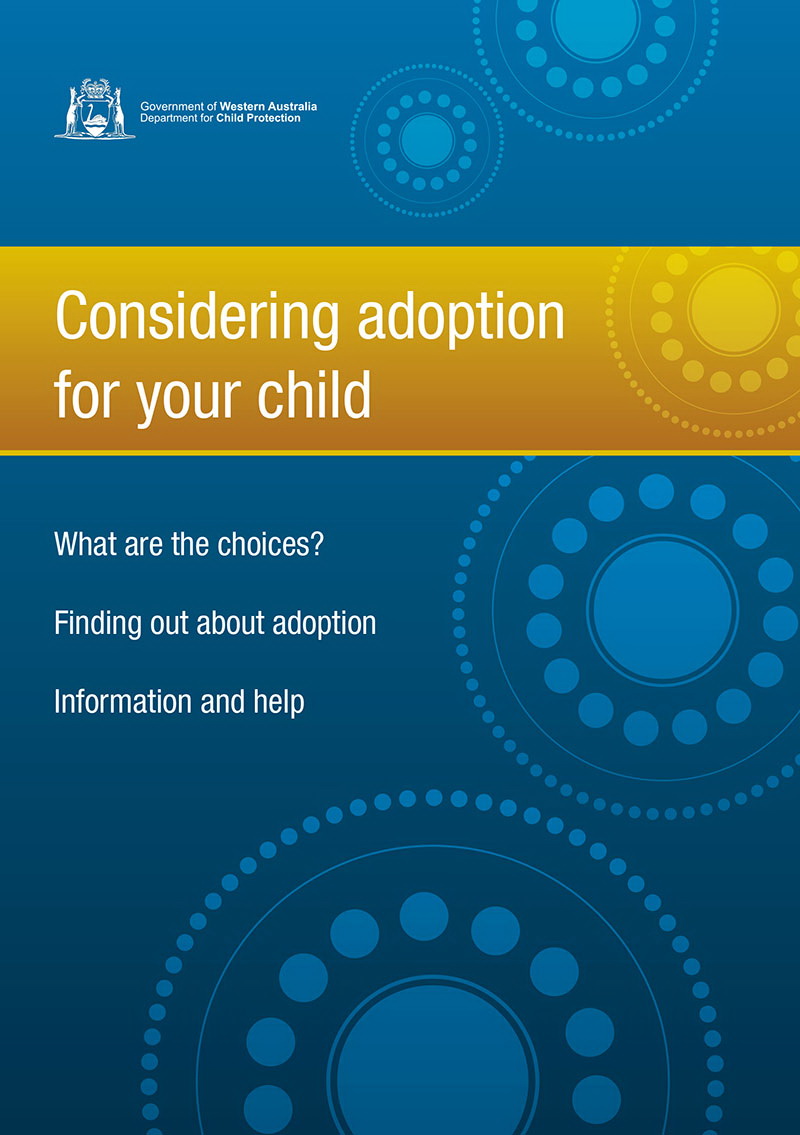Adoption During Pregnancy. The British and Australian Practice / „Pentru viață” magazine, Spring 2014

Countries like Australia or the US have a so-called “open adoption” law, which allows starting the adoption process during pregnancy. It has proved an excellent solution for all parties involved. We present you some excerpts from the leaflet Considering adoption for your child, made by Western Australia’s Fostering and Adoption Services Department. The leaflet targets pregnant mothers who are considering giving their unborn child for adoption. The leaflet is adapted after another material, Pregnant and thinking about adoption?, published by the British Association for Adoption and Fostering in 2009.
· Social workers will explain to the natural parents what adoption means and what their rights are, without putting pressure on them to make a decision either way.
· The mother can raise her child herself, with support of the other parent and/or extended family (the child’s grandfathers etc)
· The child can be placed in foster care for a short period, while the mother considers her options or the family reunites. The parents can take the child back after they prove they have a stable home.
· The Australian Adoption Act 1994 allows the mother a long period of time to think.
· It is illegal to make private arrangements to have your child cared for by someone else if this may lead to an adoption. The penalties are $25,000 fine and a two year term of imprisonment.
Confidentiality
The mother decides the degree of privacy about her child. She decides who to tell about the birth the baby. She decides whether to tell her parents or to the other relatives the truth about the baby, in case the child will later want to know his natural family.
Temporary foster care
The child may be placed with a foster carer while the mother decides what to do. Mothers are encouraged to visit the child. Sometimes they are reluctant to do it. Staff are happy to discuss the reasons and will not place any pressure on the mother.
The other parent’s rights
Both parents have equal parental rights and legal responsibility for the child. Both must give their written consent for adoption. Sometimes it is not possible and a dispensation may be obtained from the Family Court.
How much time you have in order to think about adoption
After signing the papers, there is a 28-day ‘revocation period’. It starts when the Director General of the Department for Child Protection acknowledges all parties’ consent, and the consent. The mother can still change her mind during these days.
How are the adoptive parents chosen?
The social worker will ask the mother about the important qualities she wants in the adoptive parents and the preferred lifestyle. A match will be made with this information and approved applicants waiting for an adoptable child. The would-be adoptive parents must have a clean police record, go through a detailed screening by the Child Protection Service and provide a medical report.
An assessment report is written and then presented to a committee of experts for evaluation.
The mother will receive 3–4 pre-approved profiles of families who want to adopt. The profiles will include information on each family’s qualities, lifestyle, religion and medical history etc.
Anonymous adoption, not the best solution
In the past it was thought that anonymity was the best for the child. But then it was realized that it distressed all parties involved. Lately, society’s attitude towards pregnancy outside marriage became more relaxed. Research has shown mothers who gave up their children for anonymous adoption suffered all their lives for not knowing what happened to them. Also, many adopted children want to know about their original family heritage.
Open adoption: natural parents can see their child afterwards
After 1995, in Australia, most parties to an adoption know each other. Adoptive parents must explain the situation to adopted child in a way that he can understand.
How all the parties keep in touch
An Adoption Plan is made, which is legally binding and sets out how often and what sort of information will be shared (letters, photographs, videos), by whom and how. It also states if and how often the natural parent can contact the child and the adoptive family. It outlines how meetings will be arranged and where. The plan can be changed by mutual agreement, but needs to be approved by the Family Court. There are heavy penalties for any breach of it.
Evaluation period before confirming the adoptive parents
When the child has been with the adoptive family for six months, they can apply for an Adoption Order from the Family Court. During the six months a worker visits the family to see how your child is settling in and offers advice and support. The worker will provide information to the Family Court, which will decide whether to grant an Adoption Order, which is definitive.
The child’s name
The child will take the last name of the adoptive parents. However, the child’s first name cannot be changed without permission from the Family Court.
Source: http://www.dcp.wa.gov.au/










